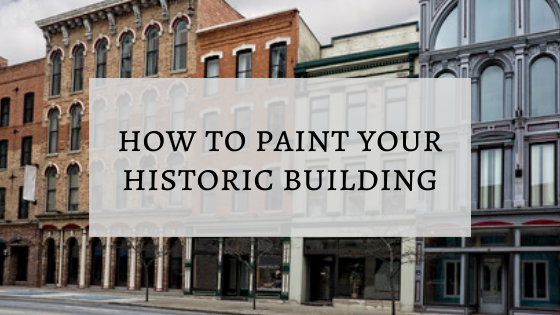Historic buildings are full of charm. With unique architectural styles and unusual stories, it’s no wonder that more and more people are looking to historical buildings for their homes and office spaces. Nevertheless, a historic building can’t be treated in the same way as a contemporary building. When it comes to painting one, for instance, there are many things that must be considered before you slap on that first coat of paint.
Color
We’ve talked about how to choose the best exterior and interior colors, but choosing colors for a contemporary building is different from a historic building. While many of the same rules apply, you must also consider some additional factors:
Historical accuracy
This is for the purists, the people who want their historical building to look exactly as it did when it was first built. You’ll need either an old picture or some long-term residents who remember what the building looked like when it was first built (this, however, is a dubious option as people may remember incorrectly). Once you have the color, bring it to a paint store for them to match it.
Historical appropriateness
Chances are that you don’t have an old picture or some long-term resident with a photographic memory. If that’s the case, then you can aim for paint colors that are historically appropriate. In other words, these are the colors that your building most likely was painted based on the trends of the time period in which it was built.
Or start from scratch
There’s no clear-cut rule that the colors you choose have to be historically accurate or appropriate. These are just additional options to consider based on the kind of the look you want your building to have. You can always start from scratch with any color scheme that you want.
Prep
Since this is a historic building, there’s going to be more prep and maintenance to be done in order to get it ready for painting. Here’s what you’ll have to do:
Repair, don’t replace
Part of the charm that your historic building brings to the neighborhood is its unique architectural designs. While these will have certainly deteriorated, you should try your best to repair them instead of replacing them. These are original pieces, after all, so you won’t be able to find an exact replica at Home Depot, and getting them custom made can be more expensive than simply repairing them.
Check for water damage
Older buildings are extremely susceptible to water damage. This is due to crumbling exteriors that haven’t been treated in decades. Use a moisture meter and check the moisture of the wood surface you plan to paint. If it’s greater than 15%, you’ll have to replace the wood in order to paint it properly.
Assume that there’s lead
Most older buildings were painted with lead-based paint. In that respect, it’s safe to assume that your building is filled with lead. Follow these steps to safely remove all traces of lead paint.
Wash
Your building has been standing for a long time, so make sure you get rid of all of that dirt and grime by giving it a good wash before painting.
Remove loose paint
Assuming that you don’t have lead paint, you should remove any loose or chipping paint you find. You can do so using a scraper, infrared heat gun, or a paint shaver. Once all of the loose paint is gone, sand down any remaining rough edges.
Caulk and prime
Check for gaps around the siding and trim. If you notice any, fill them in with caulk, then sand and prime it for painting.
Needless to say, there’s a lot involved when painting a historic building. So, if you need a helping hand, be sure to contact Richard Stewart Painting for any of your residential or commercial painting needs.





Recent Comments